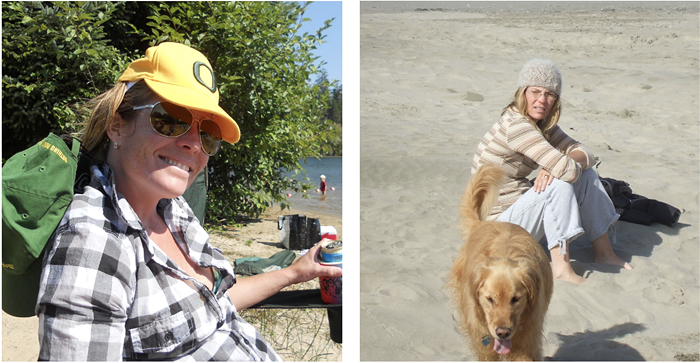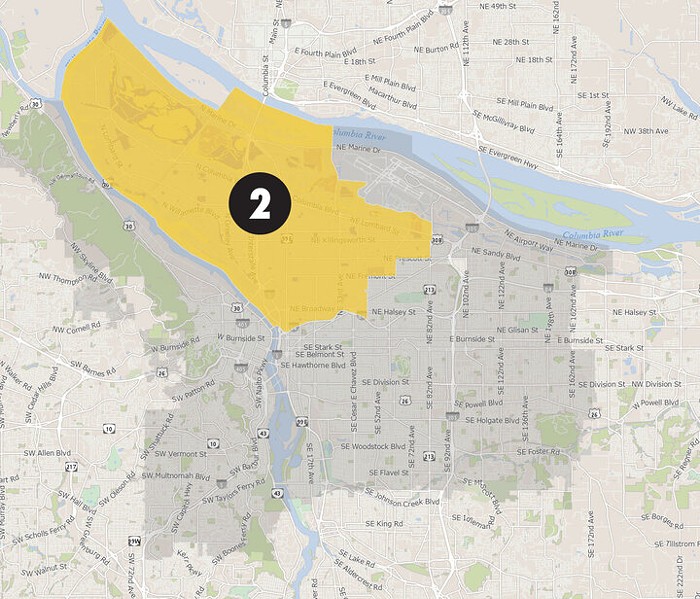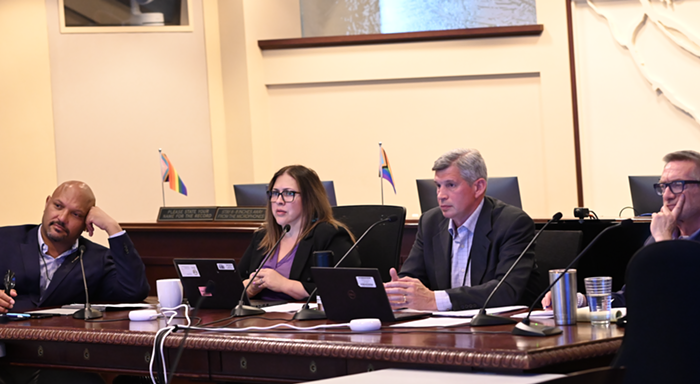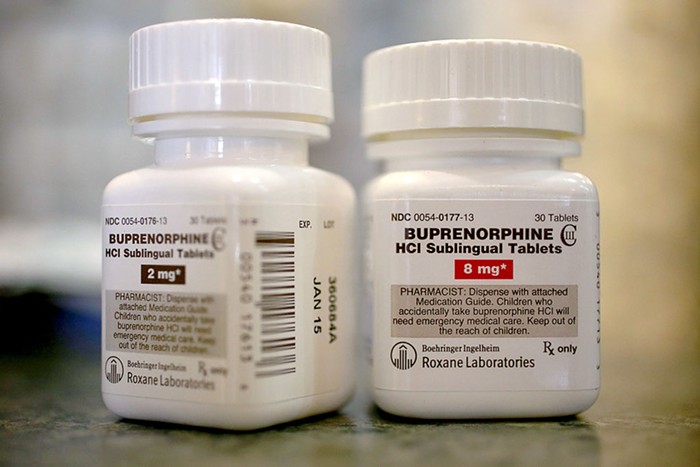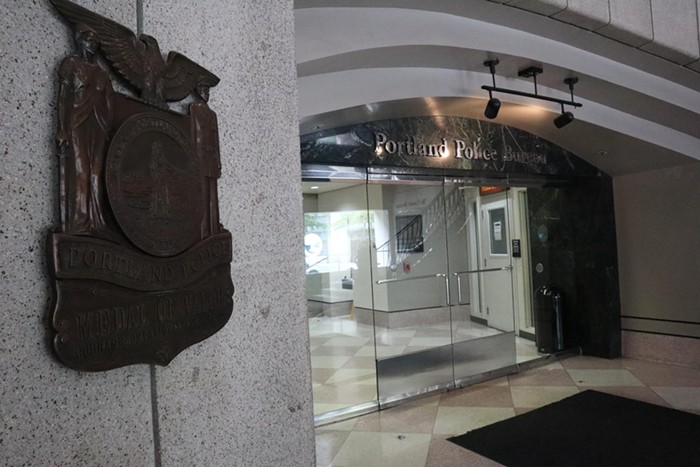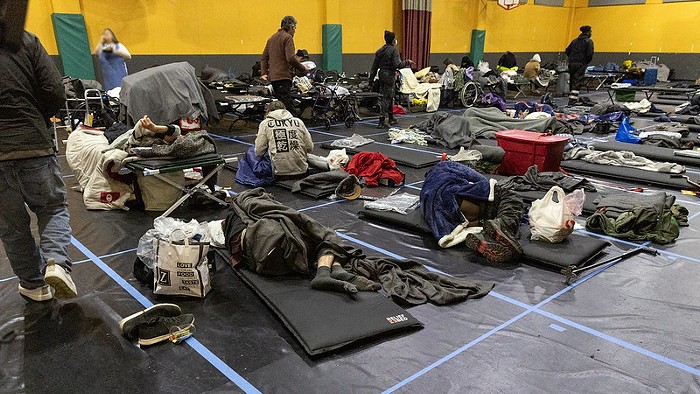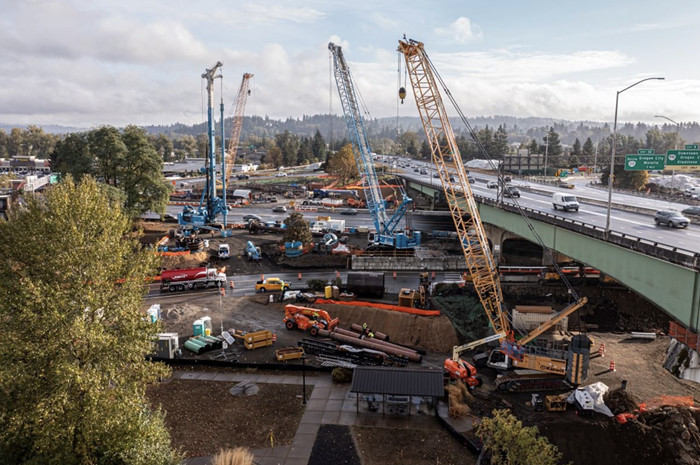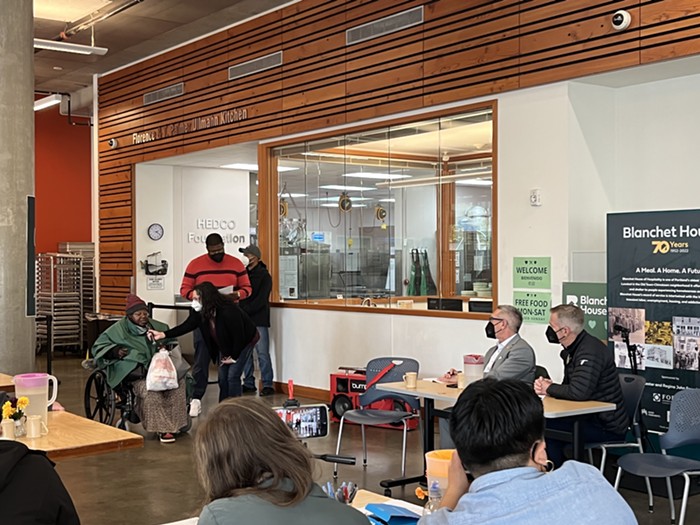IN PORTLAND, your drug of choice can dictate your movements.
Get popped with a marijuana conviction, you might find yourself disallowed from much of Old Town and downtown. Busted with heroin or cocaine? You could be unwelcome in both of those, plus the Lloyd District.
But maybe that's set to change.
The so-called Drug Impact Areas (DIAs) established by then-Mayor Sam Adams in 2011 have been celebrated by business owners and questioned by defense attorneys. Now they might fall victim to the push and pull over city and county priorities that's become a hallmark of Mayor Charlie Hales' tenure.
As part of the budget Portland City Council passed on May 29, Portland is pulling the more than $100,000 it doles out annually for a deputy prosecutor who handles DIA cases. With that money unlikely to be replaced by the county, Multnomah County District Attorney Rod Underhill is puzzling over whether his limited resources are best spent enforcing what is largely a city-initiated policy.
"We're exploring that very thing almost as we speak," Underhill says. "I have other obligations—to property crime, to East County. I have a much broader lens."
If Underhill decides he should focus his attention on other priorities, the DIAs will take a nosedive. The city's money pays for a deputy DA who prioritizes certain drug cases—pushing for convictions and then probation orders that stipulate an offender may not enter an impact area except for a valid reason, like a job.
The program is similar to Portland's old Drug Exclusion Zones, discontinued in 2007, which did not require a conviction to enforce, just an arrest, and met heavy criticism that it unfairly targeted minorities.
"Having that DA is critically important," Police Chief Mike Reese tells the Mercury. "You pull that out, it jeopardizes the whole thing."
The county's most-current statistics on the DIA program weren't available by deadline, but a report released one year into the project reflected almost 600 exclusions had been issued—most of those cases stemming from possession rather than distribution of drugs. In addition, numbers obtained by the Mercury show, as of December 31, 113 people had been arrested since the program's inception for illegally entering one of the zones.
Howard Weiner, owner of Cal Skate Skateboards and a member of the Old Town Chinatown Community Association, has long been a fan of the areas. It's been years since someone smoked crack in his doorway during business hours.
So Weiner was surprised to learn the program's future is in question. He'd heard dedicated money for a prosecutor would be on the table.
"I didn't think we'd be having this discussion," he says. "This is not what we want to see."
Hales has questioned several other city-county partnerships while seeking to fill a $21.5 million budget gap. Most prominently, the mayor's office briefly clashed with the county over funding for social services programs before working out a deal.
The prosecutor spot is no different, Hales says—the county should be paying for its own employees, even if their role is to administer a city-initiated policy.
"I think we can be adults about this," Hales says. "This is not a vote of no-confidence in the work. It's a question of who pays for it."
The DIAs have not seen universal acclaim. They're not reviled like the old exclusion zones, but the impact areas have caused defense attorneys to wonder whether they might unnecessarily lead to strict conviction standards on minor drug offenses—essentially heaping more trouble on low-level addicts already grappling with myriad problems.
And some question, anecdotal evidence aside, whether the DIAs have meaningfully curbed drug activity.
"Is there any standard by which they're judging whether this is a successful thing, is my bigger concern," says Lane Borg, executive director of Metropolitan Public Defenders Services, Inc. "If it went away, I don't know that we would feel like things are vastly different downtown. I could be wrong."
Cops' views of the program, meanwhile, are unclear. The Mercury asked Reese whether he believed the DIAs are achieving their intended goals.
He notably stopped short of praising the program, saying only: "It's one of the tools in the toolbox."
